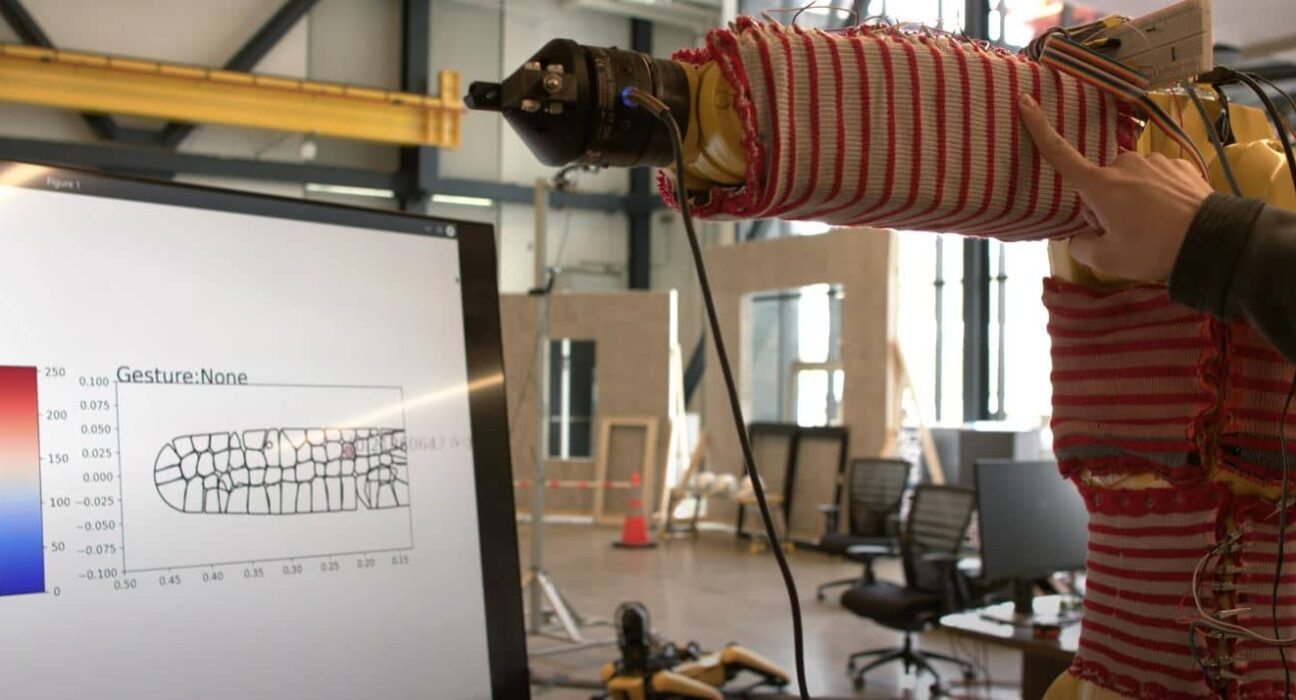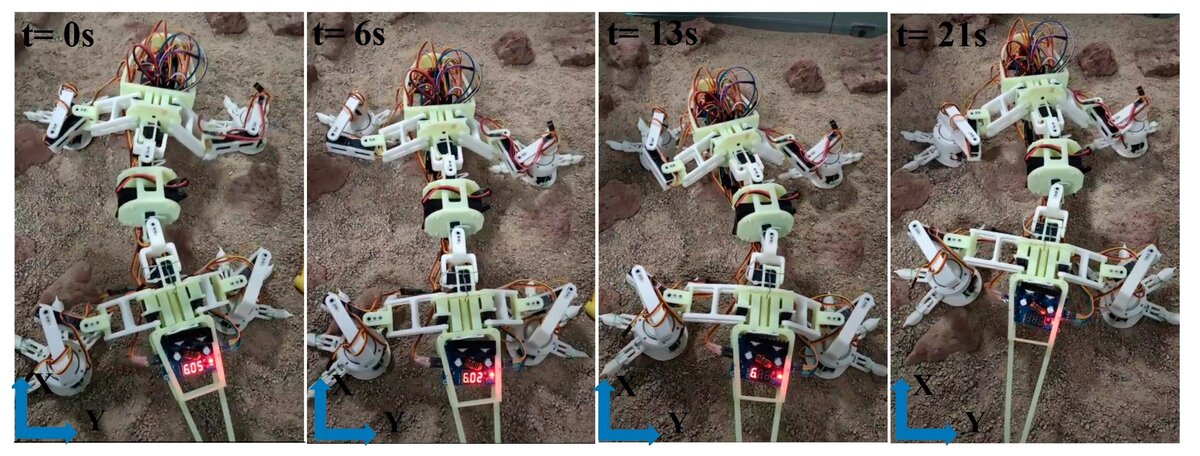Most people do not imagine robots wearing knitted sweaters, but this could become a reality in the future. The reason is certainly not because the robots feel cold, but the special fabric may help them “feel” the touch of a human hand for example, and also the grip pressure.
An engineering team at Carnegie Mellon University’s Robotics Institute used the characteristics of a knitted sweater to produce a fabric capable of sensing pressure and contact, as described in a research article planned to be presented at the 2023 IEEE International Conference on Robotics and Automation. The state-of-the-art material can now aid in indicating direction, orientation, and even grip strength through the senses of touch.
The novel “RobotSweater” fabric can be woven into any necessary three-dimensional shape, just like its yarn inspiration, and can thus be fitted over the uneven shapes and surfaces of robots. Two layers of metallic threads that can carry electricity are woven into the knit fabric itself. There is another lace-like pattern added in between those two layers. When pressure is applied, a closed circuit is created that sensors can then detect.
The team wrapped the wires around the snap fasteners at the end of each stripe in the cloth to ensure that the metallic yarn wouldn’t degrade or break with use. According to James McCann, an assistant professor at Carnegie Mellon’s School of Computer Science (SCS), “you need a way of attaching these things together that is strong, so it can deal with stretching, but isn’t going to destroy the yarn.”
Researchers outfitted a companion robot with their RobotSweater to show off their invention, then pushed the robot to control its head and torso movements. When a robotic arm was grabbed, a grasping mechanism would open and close in response to guided human pushes on the cloth.
Not only is it cool to wrap robots in smart sweaters, but it might also be quite useful in industrial situations to increase the safety of human workers. The majority of safety barriers are currently very rigid and shield-like, the team claims. By covering machines in flexible, sensitive fabrics, however, the team hopes to increase their sensitivity and enable them to “detect any possible collision,” according to Changliu Liu, an assistant professor of robotics in the SCS. In the future, the team wants to use touchscreen controls like pinching and swiping to control robots.





